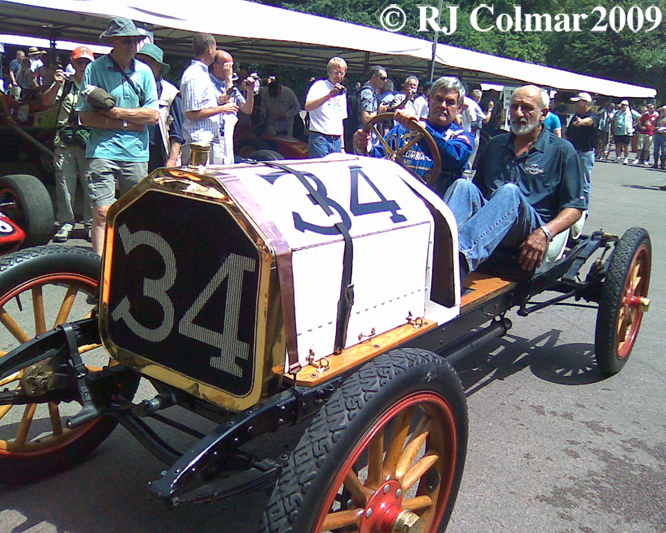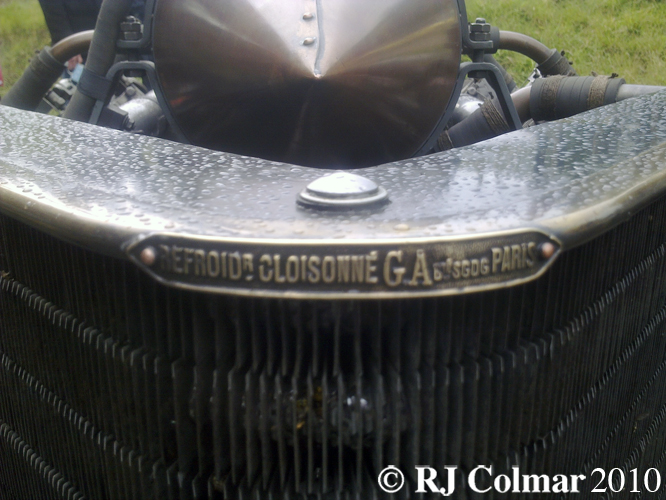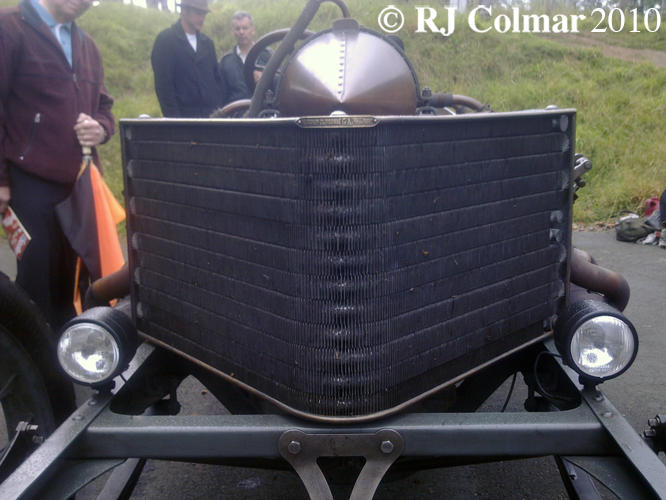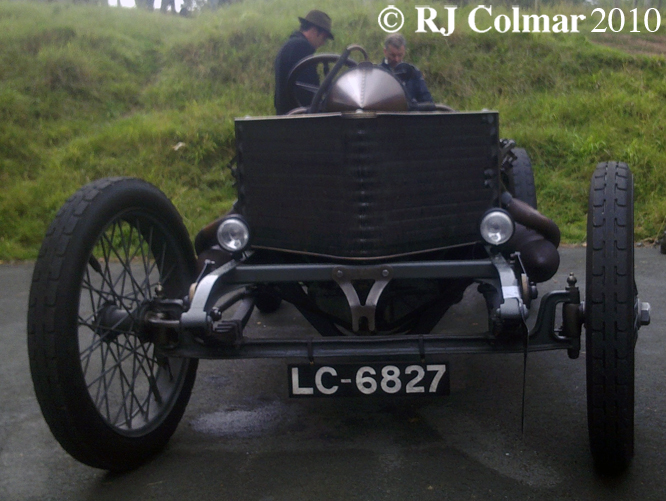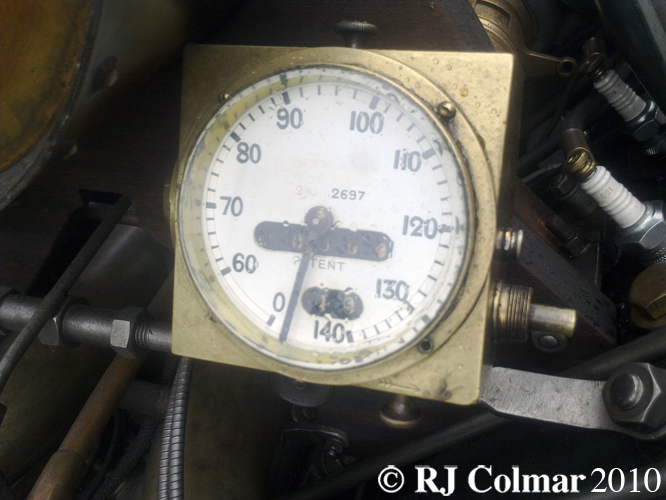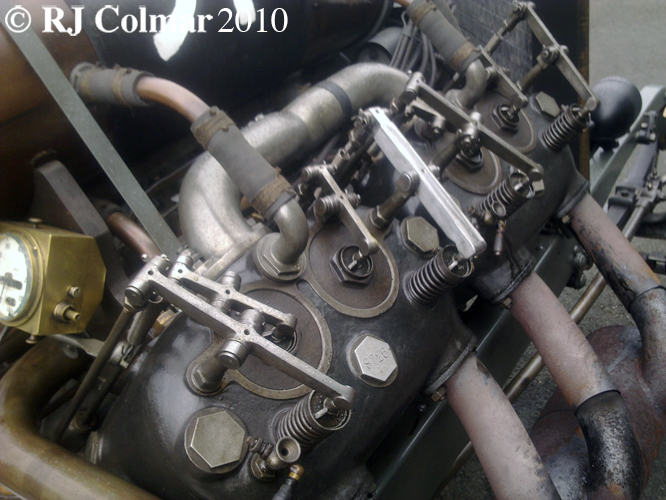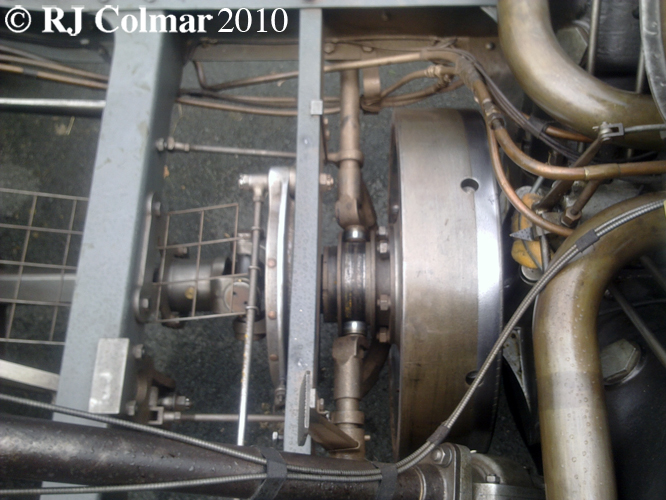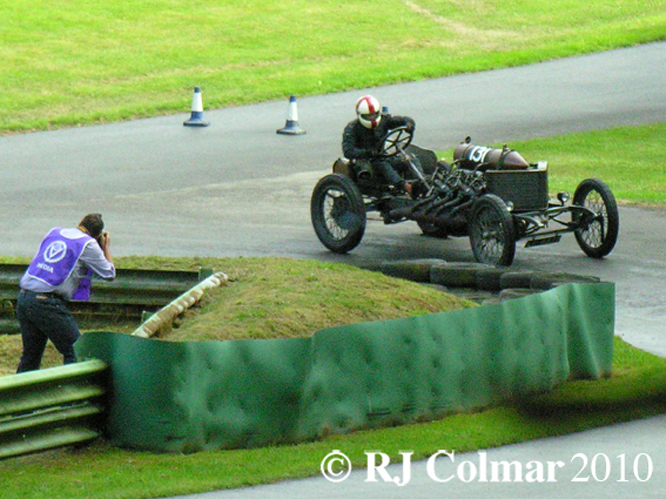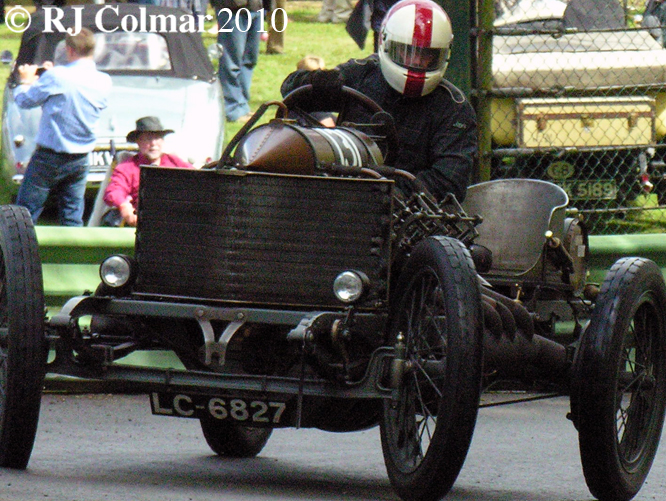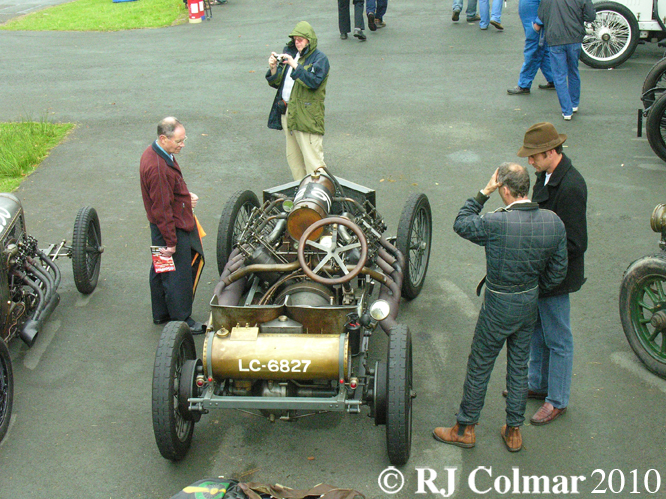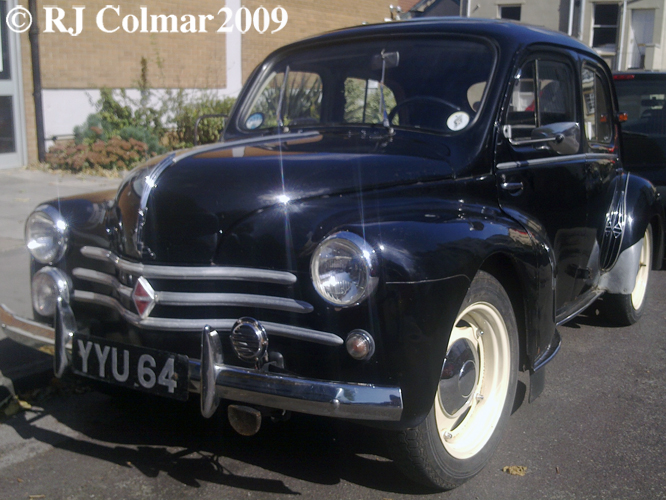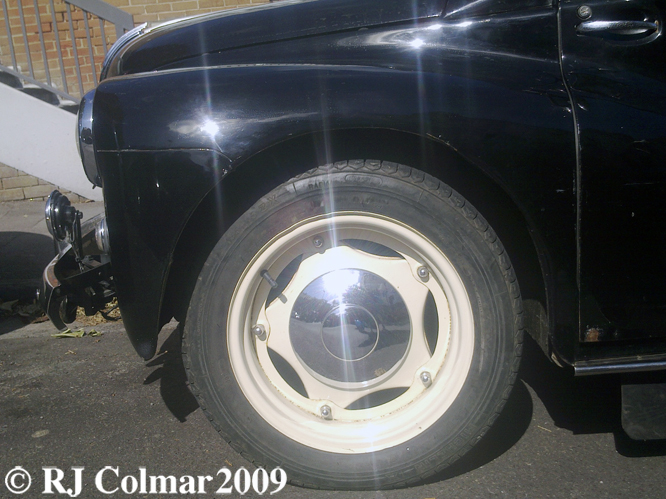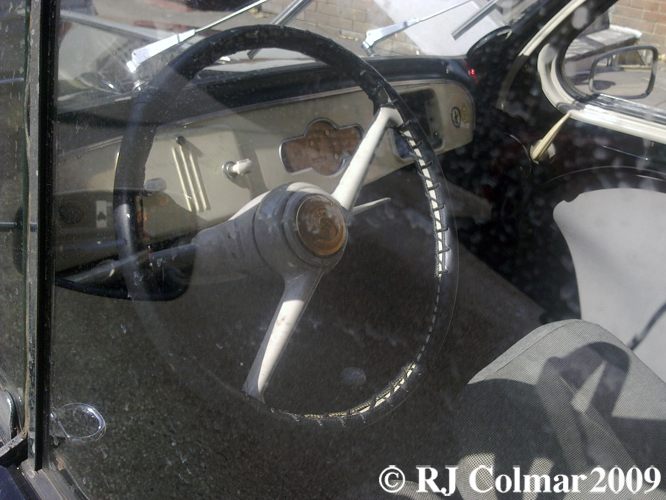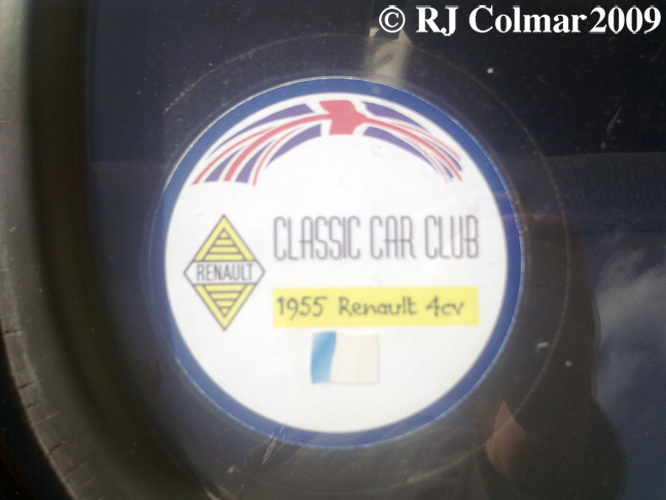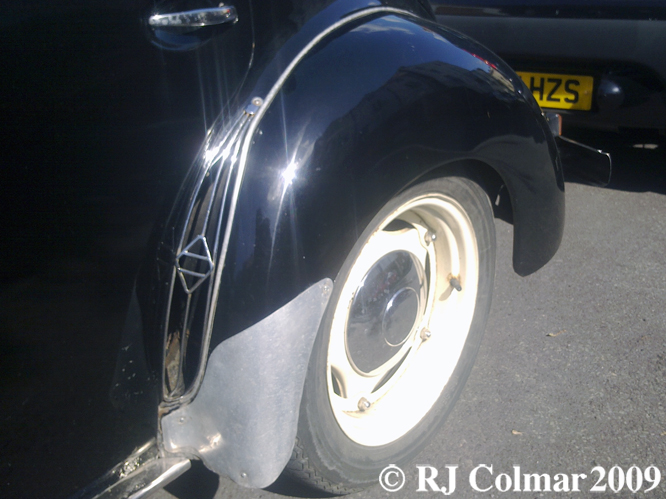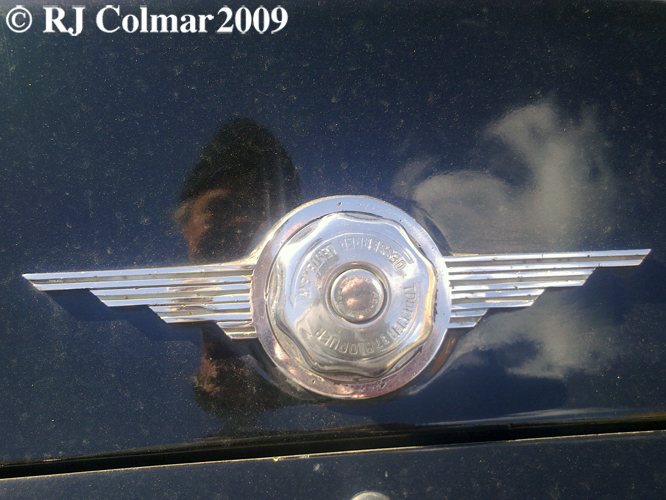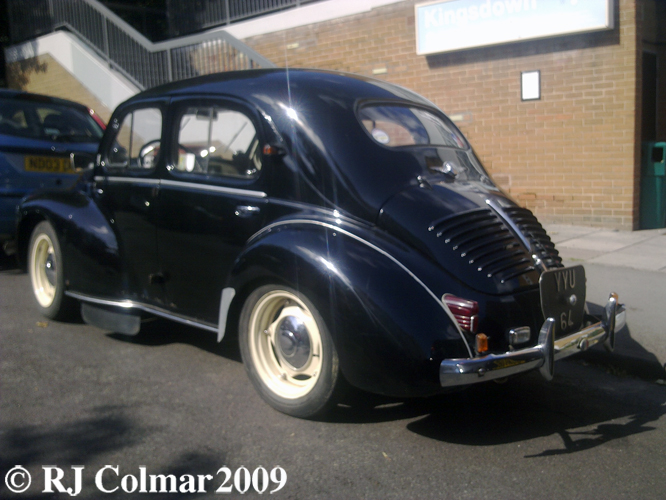Today ‘Gettin’ a lil’ psycho on tyres’ will be starting a month long celebration of the 100th Anniversary of the first running of the Indianapolis 500.
Apart from tomorrow’s post, and the four Ferrari Friday posts, all blogs up until and including May the 29th will be about the Indy 500.
Combining Ed Arnaudin‘s and my own collection of photographs I hope to take you through a marginally less than random history of this extraordinary event.
When I started reading up on this car a few hours ago all I knew about it was that according to the 2009 Goodwood Festival of Speed Guide was that it was a 4.8 litre 4 cylinder 293 cui Buick “thought to be the actual Buick that won the first race at Indy, driven by Louis Chevrolet on the four lap, 10 mile race”.
However I only had to check with the Wheels, Winter / Spring 1998 Journal of the National Automotive History Collection published by the Detroit Public Library to find that the winner of the first race at Indianapolis on Aug 19th was now well known automotive engineer Louis Schwitzer driving a four cylinder 212 cui Stoddard Dayton in a two lap 5 mile race.
Louis Schwitzer would become famous for designing the 1911 inaugural Indy 500 race winning engine for Marmon and later still for designing a variety of automotive pumps used in a wide variety of civil and military applications along with superchargers and latterly turbochargers as used by the, subject of a future blog in this series, 1952 Cummins Diesel.
Thanks to Gerry Godin’s ‘Buick City‘ blog I found the 16b Marquette Buick model name for today’s featured vehicle a wonderful photo of this vehicle on the Indy start line dated 1910 can also be seen on the blog.
Once armed with the model name I found out something about the myth of Buick winning the first automobile race at Indy dating back to at least the September – October 2002 Vol. 66, NO. 5 edition of Antique Automobile (Official Publication of the Antique Automobile Club of America, INC.) and the truth about some of the history of the #34 16b. Marquette Buick in an article by Terry B. Dunham which starts on page 29.
Terry asserts in paragraph 2 on page 43 of his article entitled ‘Something Wicked This Way Comes’ “The first races run at the Indianapolis Motor Speedway were held August 19th, 20th and 21st 1909, some two years before the first 500. Buick entered and won two of the three events, including the first race ever held at the track.”
Why Terry’s account in his otherwise excellent article should be at variance with the Journal of the National Automotive History Collection I cannot imagine but I believe the Journal of the National Automotive History Collection has got the story correct about Schweitzer winning the first automobile race at Indianapolis in 1909. May be someday Mr Dunham will chime in below. [EDIT See Post Script below]
So having cleared up a few myths here is what I do know about the 16b Marquette Buick seen here driven by 4 time Indianapolis 500 winner Al Unser Snr.
The origins of the 16b Marquette Buick can be traced to an accident in the 1908 Savannah Grand Prix which befell Fritz Erle after a tire on his, otherwise superior, overhead valve 11.7 litre 716 cui Benz threw a thread which knocked the unfortunate Erle unconscious causing him to loose control of the car which ended upside down on the side of the track.
This misfortune was all the opportunity Buick designer Walter Marr, who’s Buick stood no chance against the superior handling and power of the FIAT’s and Benz vehicles in Savanah that day, needed to inspect the superior suspension design of the Benz while it was upturned and commit the detail to memory.
Later Marr directed a Buick photographer to take photographs of the dismantled overhead valve Benz engine that was stripped down inside the Benz camp while it was left unattended. You can see photographs of this skullduggery on page 37 of Mr Dunham’s article.
Marr used this information to build three hot rods one of them, the one in the photograph, with a 5.2 litre / 318 cui 4 cylinder overhead valve racing engine and all three with chassis built by the Marquette Motor Company, part of the General Motors conglomerate.
These three hot rods were variously called regular model Buick 30 and then regular Buick 16 Roadster while they were actually ‘illegal’ racing specials with non production engines and chassis taking part in races designed for ‘stock’ vehicles.
The vehicle in the photograph above, entered as a Buick 30, is credited as the one driven by Louis Chevrolet to the most important of Buicks 166 (one hundred and sixty six) race victories during the 1909 season in The Cobe Trophy.
The race of attrition, held at Crown Point over 395 miles was won when Chevrolet running on only three cylinders thanks to a broken valve snatched a 65 second victory from a Locomobile which had been delayed by half an hour by magneto problems and beat an otherwise apparently healthy Knox.
By May 1910 the AAA got wise to the loose ways of Buick model naming policy and excluded the three Buick specials for not being ‘stock’ production vehicles.
An interesting foot note to the question of who won the first auto race at Indianapolis in 1909 is that in 1911 Louis Chevrolet turned up with a Marquette Buick for the first Indy 500 without a proper entry, despite being told to ‘sandbag’ go only as fast as necessary to qualify (around 75 mph) Louis foolishly went round at 93 mph.
The organisers of the race agreed to let Louis start on condition the owners of the other teams unanimously agreed to sign a waiver. Having blown every one into the weeds in qualifying three teams declined to sign one of them was Marmon who’s engine designer was Louis Schwitzer and who’s car went on to win the very first Indy 500, I wonder if there is some inter state rivalry between Indiana and Michigan afoot to explain the discrepancy in the answer as to who won the very first auto race at Indianapolis? [EDIT Turns out there is not see postscript]
My thanks to everyone mentioned in this blog for their contributions.
Hope you have enjoyed today’s extended history lesson edition of ‘Gettin’ a lil’ psycho on tyres’ and that you’ll join me and a very smart young lady tomorrow for a Birthday celebration. Don’t for get to come back now !
01 05 11 PS the mystery over who won the first race on the opening day at Indianapolis has been resolved thanks to Tim Murray at The Nostalgia Forum :-
Louis Schwitzer won the very first five mile race at Indianapolis aboard his Stoddart-Dayton.
A Buick was driven to victory in the 3rd 5 mile race.
Bob Burnham won the very first 250 mile ‘FEATURE’ race aboard his Buick !

